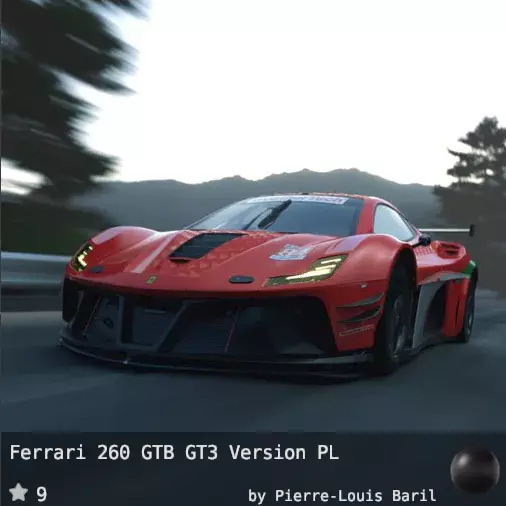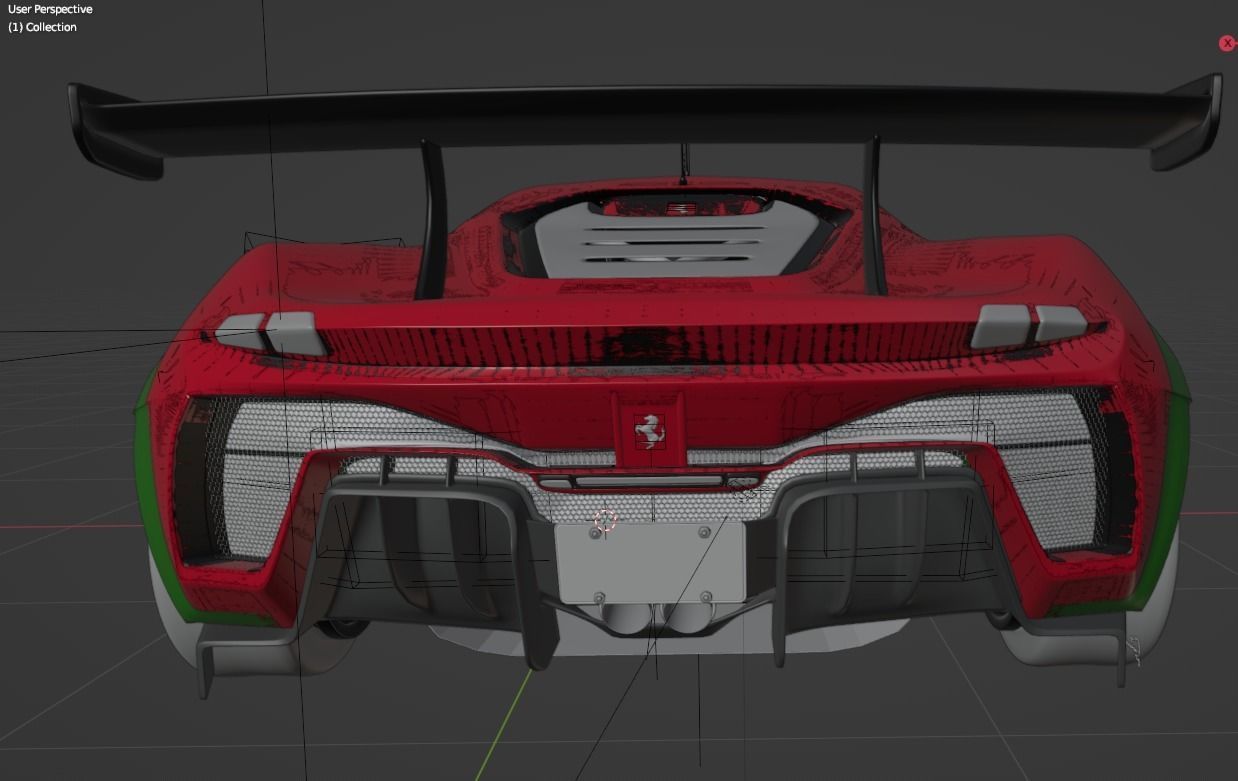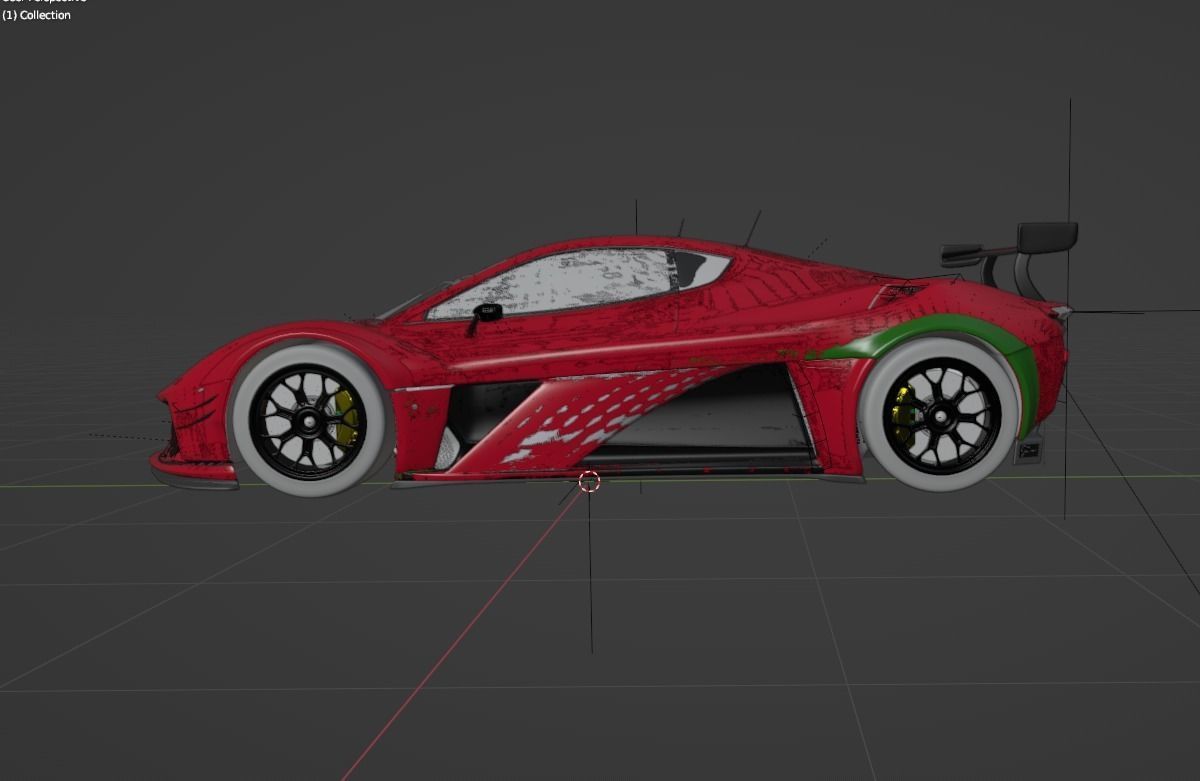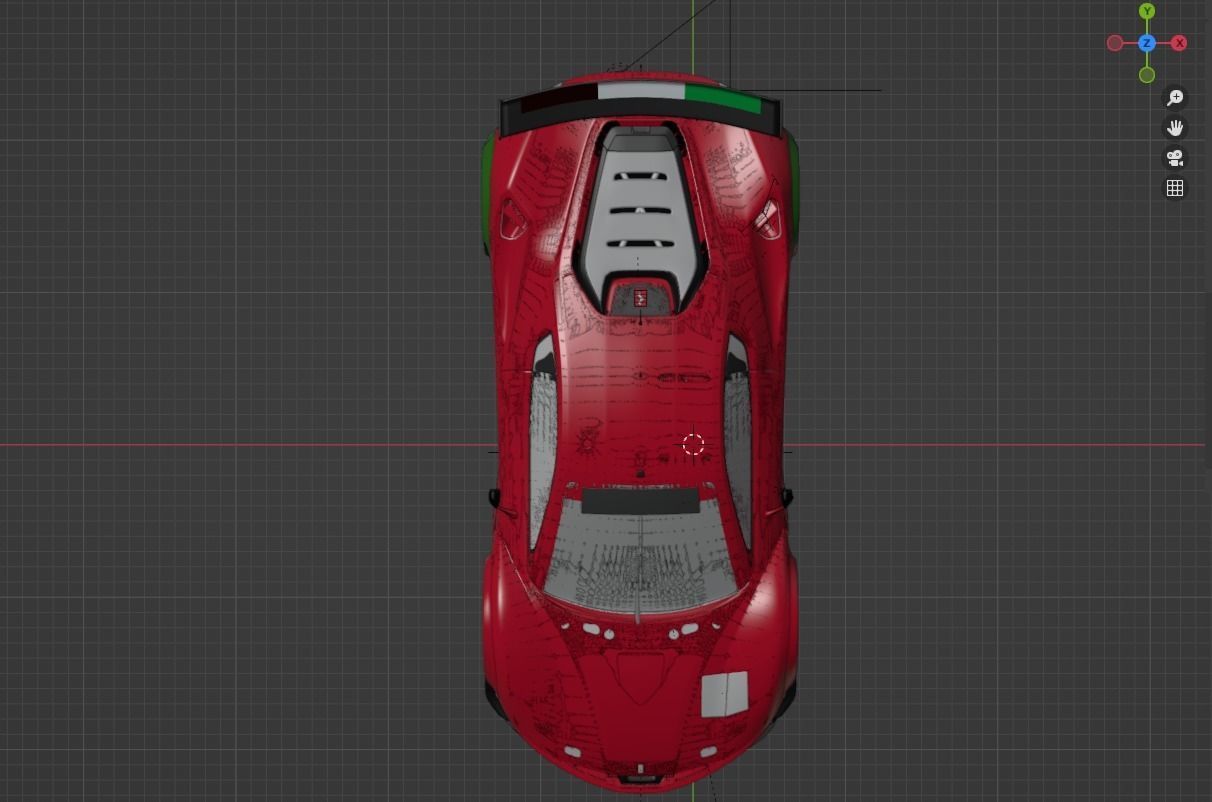
ferrari Low-poly 3D model
The F1 in schools competition is actually a CO2 powered dragster race (with other aspects including CAD design and engineering, marketing and sponsorship, pit booth design and building, etc). The connection with F1 has to do more with branding than any technical aspect of the cars.
In real F1 cars, you need loads of downforce to allow fast cornering speeds. Furthermore, friction/grip between the wheels and the ground is critical because real F1 cars get their propulsion from their wheels, and also need to slow down under braking. All this also requires a lot of downforce, otherwise you get wheelspin or the wheels may lock up under braking. And a lot of downforce=a lot of drag.
It is completely different in F1 in schools cars.
F1 in schools cars travel purely in a straight line down a 20 meter track. You want minimum drag and minimum downforce. The greater the downforce, the greater the frictional forces between wheels and track, and the slower the car. F1 in schools cars get their propulsion not from their wheels, but from the egress of high pressure carbon dioxide from a canister-ie it is ‘rocket powered’. F1 in schools cars are constrained to travel in a straight line by being tethered to the track with a nylon string.
The F1 in schools race can be thought of (like any other CO2 dragster race) as occurring in 2 phases:
Acceleration phase (CO2 egress in progress)Coasting phase (CO2 used up)-car at maximum speed and starting to slow downTo maximise the effects of the propulsive force and garner the greatest acceleration (and achieve the highest speed), you want to have the lightest possible car and minimise the predominant drag forces in that phase. The predominant drag forces at the beginning will be those that occur at lower speeds and include wheel drag and tether line frictional forces. These can be minimised by minimising rotational frictional forces with bearings and minimising rotational inertia with wheels that are as light as possible. The wheels should be well aligned to avoid inducing yaw tendencies, which would cause the tether line to rub against the guide holes. The wheels should also be as rigid as possible to reduce loss of energy in wheel deformation.
In the coasting phase, while wheel related factors are still very important, good aerodynamics now becomes much more important. If you look at slow motion captures of F1 in schools races, you may see that some cars start off slowly then overtake the other car towards the end. This may be a sign of superior aerodynamics, since aerodynamic forces come into play when the car is traveling at high speed, in the coasting phase.
And how can you design a car to minimise aerodynamic drag? The basic principles are to minimise frontal area, minimise the effects of pressure drag from flow separation/turbulence, and minimise the effects of overpressure at the front of the car. There are almost endless possibilities in this regard and it also depends very much on the particular rules that the organisers set for the particular year of competition.
And finally, don’t forget to test. And re-test. Every iteration can be tested on computational fluid dynamics (CFD) programs, and then if resources allow, tested also in a wind tunnel and on the track. The results may surprise you, and go a long way in helping you get the fastest possible car.P/s: The above is a concept that sadly never saw the light of day. F1 in schools was a very popular optional activity at Raffles Girls School in Singapore. In fact, it is fair to say it was the most popular among several electives, until it was canceled by the school after 2020, ostensibly to give greater emphasis to coding. My second daughter was part of a team that won the national competition in 2019 as Team Veloxus, with a car that clocked 0.996 seconds. The concept above was to have been their entry into the F1 in School World Competition the following year. Due to COVID issues, sadly their team which had been due to go, pulled out after all. It seems like F1 in schools is dead in the water in Singapore at the moment (2022). Which is a very sad thing indeed.






